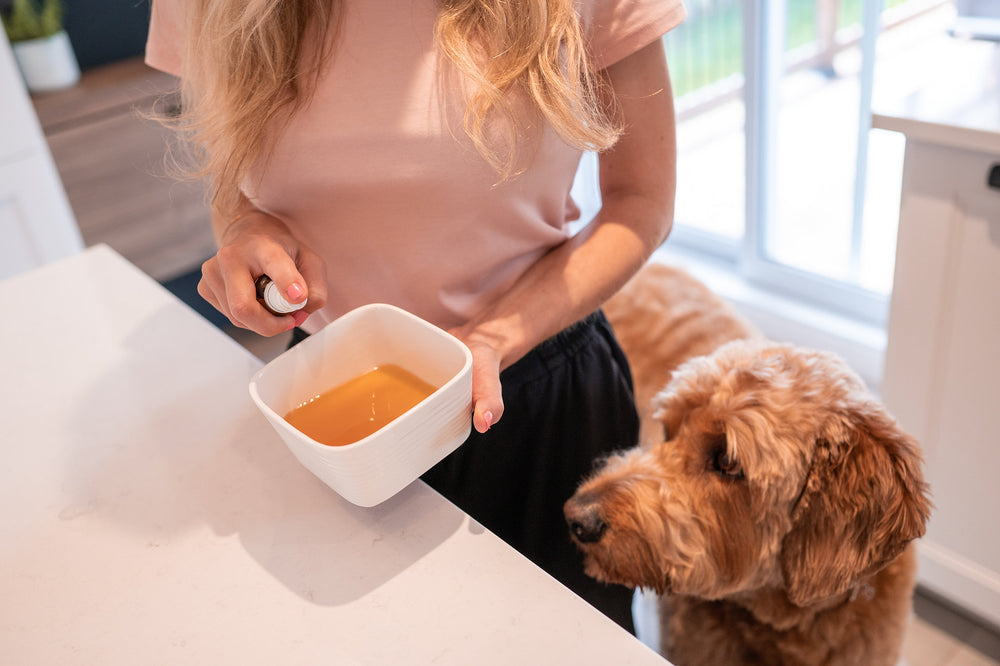Vet Insights: Why Is My Dog Aggressive? Causes, Key Signs & Pro Strategies
List of Contents
Canine aggression is the most common and often the most serious behavioral issue faced by dog owners. Misunderstood and stigmatized, it’s a leading reason pet parents seek professional help.
Aggression in dogs includes a wide range of behaviors triggered by various underlying causes. Often, it’s an instinctive response to pain, discomfort, fear, stress, or confusion, not a sign of a “bad” dog. Identifying the specific trigger is key to managing and modifying aggressive behavior safely and effectively.
Barking, growling, lunging, and even biting are often mislabeled as signs of an aggressive dog. In truth, these behaviors are typically expressions of stress, fear, or unmet needs, not indicators of a dangerous temperament.
Canine aggression is a multifaceted behavior that may stem from either defensive instincts or offensive intent. Understanding its root cause is essential to developing an effective treatment plan and achieving lasting behavioral improvement.
Recognizing the Warning Signs of Dog Aggression

Early signs of dog aggression are often subtle but critical to recognize. Identifying these warning signals can help prevent escalation and ensure safer interactions for both pets and people.
Aggression as communication
Aggression in dogs is a form of communication that exists on a spectrum. Most dogs give clear warning signals, such as growling or snapping, before resorting to biting. Punishing these early signs can suppress communication and increase the risk of sudden, more dangerous behavior.
Early warning signs of dog discomfort and aggression
Subtle signs, such as yawning, excessive lip licking, freezing, or sudden stillness, often signal that a dog is stressed or anxious. Recognizing these early warnings is key to preventing escalation into aggressive behavior.
Dogs often display subtle signs of discomfort, such as avoiding eye contact, turning their head away, or showing the whites of their eyes. Dilated pupils, trembling, a lowered tail, or crouched body posture can also indicate fear or anxiety.
Escalating signs of dog aggression
Overt aggressive behaviors like growling, snarling, baring teeth, or curling the lips signal that a dog feels threatened and wants to create distance. These clear warnings should never be ignored, as they are the dog’s way of avoiding conflict before escalating further.
Additional signs of escalating aggression include hard staring, lunging or charging, and snapping without contact. These behaviors indicate a heightened level of threat and should be taken seriously to prevent injury or further escalation.
What Causes Dog Aggression? 7 Types & Triggers Explained

Dog aggression can take many forms, each driven by different underlying causes and requiring specific behavior strategies. Identifying the purpose behind the aggression is essential for accurate diagnosis and effective treatment.
#1. Fear aggression
Fear aggression occurs when a dog feels trapped and responds defensively to a perceived threat. This reaction is driven by fear rather than intent to harm. Common triggers include strangers, other animals, or sudden loud noises.
#2. Territorial aggression
Territorial aggression is a defensive response to unfamiliar people or animals entering a dog’s perceived space, such as the home, yard, or car. The dog sees the intruder as a potential threat to their territory and may react aggressively to drive them away.
Some breeds are naturally more prone to territorial behavior, which can heighten the risk of aggression if not addressed early. Proactive training and early socialization are essential for preventing unwanted guarding or defensive responses.
#3. Resource guarding or possessive aggression
Possessive aggression, or resource guarding, occurs when a dog protects valued items such as food, toys, beds, or stolen objects. Possessive aggression can also occur when a dog protects a person. This behavior is rooted in fear of loss and can escalate rapidly if not addressed. Recognizing early signs is key to managing it safely and effectively.
#4. Pain or medical aggression
Pain-related or medical aggression often appears as sudden, uncharacteristic behavior changes in dogs. Conditions like arthritis, injuries, brain tumors, or hormonal imbalances can cause discomfort that leads to defensive or irritable reactions.
When a dog exhibits sudden or unusual aggression, a thorough veterinary exam is crucial to identify any underlying medical causes. For a more integrative approach, consulting a certified pet homeopath may offer additional support alongside conventional care.
#5. Redirected or frustration aggression
Redirected or frustration aggression happens when a dog is triggered by something it can’t reach, like a fenced-in dog or a squirrel, and redirects that arousal toward a nearby person or animal. This type of aggression is often impulsive and misunderstood.
#6. Intra-household aggression
Intra-household aggression, or social conflict, occurs between dogs in the same home and often stems from competition over resources, space, or owner attention. Addressing this behavior involves understanding pack dynamics and managing potential triggers in the shared environment.
#7. Idiopathic aggression
Idiopathic aggression is a rare and unpredictable form of aggression that appears without any clear trigger or warning. Because it may be linked to neurological issues, prompt veterinary evaluation is essential for proper diagnosis and management.
Managing Dog Aggression: Effective Solutions and Safety Tips

Managing dog aggression requires a balanced approach that prioritizes safety, consistency, and understanding the root cause. With the right strategies and support, most aggressive behaviors can be reduced or successfully managed over time.
Health check and professional help for dog aggression
Before addressing behavior concerns, a thorough veterinary exam is essential to rule out pain, illness, or underlying medical conditions that may cause or worsen aggression. Support from a certified pet homeopath can also provide valuable insights as part of a holistic care plan.
Dog aggression is complex and potentially dangerous, making professional guidance essential. Consult a Certified Applied Animal Behaviorist (CAAB), veterinary behaviorist (DACVB), or a qualified positive reinforcement trainer to ensure safe and effective treatment.
Avoid trainers who use dominance-based methods such as alpha rolls or scruff shakes, as these techniques can increase fear, damage trust, and escalate aggression. Humane, science-based approaches are safer and more effective for long-term behavior change.
Management and safety for dog aggression
Identifying and avoiding your dog’s aggression triggers is a critical first step in preventing escalation. Simple management strategies, such as adjusting walk times, using barriers, or creating safe spaces, can greatly reduce risky situations and support long-term behavior change.
Using appropriate safety equipment is essential for managing aggressive behavior and preventing injury. Tools like head halters, sturdy leashes, and properly fitted basket muzzles provide control and protection in both everyday situations and high-risk scenarios.
Consistency is key when managing dog aggression. When all household members follow the same routines and responses, it helps reduce confusion, lowers anxiety, and supports more reliable behavior change.
Behavior modification and training for dog aggression
Positive reinforcement is a key strategy in modifying aggressive behavior by rewarding calm, appropriate responses. Teaching alternative behaviors, such as making eye contact with the owner instead of fixating on a trigger, builds trust and reduces reactivity.
Desensitization and counter-conditioning (DS/CC) are effective techniques for reducing dog aggression by gradually changing the dog’s emotional response to a trigger. By introducing the trigger at a low intensity and rewarding calm behavior, the dog learns to associate it with safety instead of fear or stress.
In certain cases, veterinary-prescribed medication, such as anti-anxiety drugs, can support behavior modification by reducing underlying stress or reactivity. Medication helps some dogs become more receptive to training and can be a valuable part of a comprehensive treatment plan.
Real-life examples of addressing specific causes of dog aggression
Fear aggression can be reduced through gradual, positive socialization that helps the dog feel safe around people and other animals. The goal is to build trust and teach the dog that unfamiliar situations don’t always pose a threat.
Resource guarding can be managed by removing valued items when they’re not in use, reducing the dog’s need to protect them. This “out of sight, out of mind” approach helps prevent guarding behavior before it starts.
Struggling with Dog Aggression? CALMPET Can Help
Managing dog aggression can be overwhelming for both you and your pet. That’s why Zumalka created CALMPET, a premium, natural solution designed to help your dog feel calmer and more at ease during stressful moments.
CALMPET is a gentle homeopathic remedy formulated to help support a balanced nervous system and encourage calmer, more sociable behavior in pets. Its blend of plant-based ingredients works synergistically to ease symptoms such as fear, tremors, sensitivity to noise, and general nervousness, helping your pet feel more relaxed and at ease.
Thoughtfully crafted and easy to use, CALMPET offers a natural, stress-free way to support your pet’s emotional well-being every day. Unlike many conventional veterinary anxiety medications that cause drowsiness, this formula is non-drowsy and helps keep your pet calm and alert.
For a more personalized approach, our Certified Pet Homeopath Consultation can help uncover and address the root cause of aggression, depending on whether you'd like to include this option in the article.
A Final Word
With the right approach, many cases of dog aggression can be successfully managed and significantly improved over time. However, aggression may not be fully “cured,” and some level of risk can remain. Ongoing awareness, consistency, and commitment are essential to maintaining safety and progress.
Dog owners are ultimately responsible for managing their pet’s behavior, especially when aggression is involved. Ongoing vigilance and consistent precautions are essential to protect both people and other animals. Responsible ownership includes understanding triggers, using proper safety tools, and seeking professional support when needed.
If you're worried about signs of aggression in your dog, seeking timely help is essential. Support from a veterinarian or certified behaviorist can lead to meaningful behavior change and a safer, more harmonious home.
FAQs
How do I stop my dog's aggression?
To reduce your dog’s aggression, identify triggers, rule out medical causes with a vet, and implement positive reinforcement training under the guidance of a certified behaviorist for safe, lasting behavior change.
Why is my dog showing aggression towards me?
Your dog may be showing aggression due to fear, pain, confusion, or resource guarding. A veterinary exam and consultation with a certified behaviorist can help identify the cause and guide safe solutions.
Is it my fault my dog is reactive?
Your dog’s reactivity isn’t your fault, but understanding their triggers and responses is key. With patience, proper guidance, and consistent training, you can help your dog feel safer and more secure.
What is the most common reason for aggression in dogs?
The most common reason for aggression in dogs is fear, often caused by past trauma, poor socialization, or feeling threatened. Identifying fear-based triggers is essential for effective treatment and long-term behavior change.
What are the common triggers for dog aggression?
Dog aggression is often triggered by fear, pain, territorial instincts, resource guarding, or frustration. Recognizing and managing these triggers is essential for reducing aggressive behavior and improving your dog’s well-being.
What dog breeds are more prone to dog aggression?
While some breeds may have genetic predispositions, guarding instincts, or past traumatic experiences that contribute to aggressive behavior, a dog’s environment, training, and socialization typically play a much larger role in shaping its temperament.
Despite the influence of these environmental factors, certain breeds are still frequently perceived as aggressive. These include the American Pit Bull Terrier, Akita, Dachshund, Chihuahua, Bullmastiff, Cane Corso, Presa Canario, and Alaskan Malamute.









Leave a comment